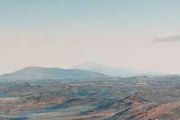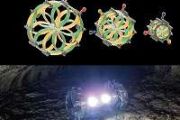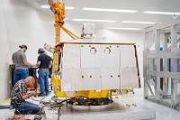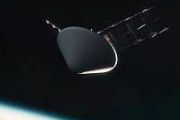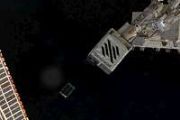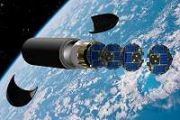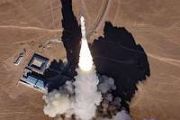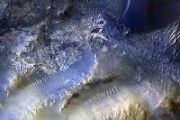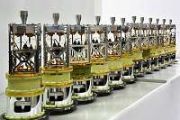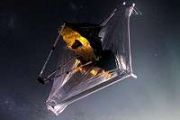
Copernical Team
Marble Visions Launches Development of Advanced 3D Earth Observation Satellite System with NTT DATA, PASCO, and Canon Electronics
 Marble Visions Inc., a subsidiary of NTT DATA specializing in Earth observation (EO) satellite services, has commenced the development of a high-resolution, high-frequency satellite system in collaboration with NTT DATA, PASCO CORPORATION, and Canon Electronics Inc. This initiative is aimed at transforming the landscape of geospatial data collection and digital twin technology.
Established
Marble Visions Inc., a subsidiary of NTT DATA specializing in Earth observation (EO) satellite services, has commenced the development of a high-resolution, high-frequency satellite system in collaboration with NTT DATA, PASCO CORPORATION, and Canon Electronics Inc. This initiative is aimed at transforming the landscape of geospatial data collection and digital twin technology.
Established Rocket Lab Advances to Production Phase for Space Force's VICTUS HAZE Mission
 Rocket Lab National Security LLC, a subsidiary of Rocket Lab USA, Inc. (Nasdaq: RKLB) and a leader in space systems and launch services, has successfully completed the Critical Design Review (CDR) for the U.S. Space Force Space Systems Command's (SSC) Tactically Responsive Space (TacRS) mission, VICTUS HAZE.
Selected in April 2024 for the $32 million contract, Rocket Lab is collaborating w
Rocket Lab National Security LLC, a subsidiary of Rocket Lab USA, Inc. (Nasdaq: RKLB) and a leader in space systems and launch services, has successfully completed the Critical Design Review (CDR) for the U.S. Space Force Space Systems Command's (SSC) Tactically Responsive Space (TacRS) mission, VICTUS HAZE.
Selected in April 2024 for the $32 million contract, Rocket Lab is collaborating w Private US company blasts off for second Moon landing attempt
 A US company is aiming for its second lunar touchdown after a lander carrying a suite of unique experiments successfully launched aboard a SpaceX rocket on Wednesday.
Intuitive Machines made history last year as the first private entity to put a robot on the Moon, though the triumph was marred by the lander tipping onto its side - something it hopes to avoid this time around.
The Housto
A US company is aiming for its second lunar touchdown after a lander carrying a suite of unique experiments successfully launched aboard a SpaceX rocket on Wednesday.
Intuitive Machines made history last year as the first private entity to put a robot on the Moon, though the triumph was marred by the lander tipping onto its side - something it hopes to avoid this time around.
The Housto SpaceX set to launch 21 Starlink satellites from Florida after delays
 SpaceX will try again to lift a new round of Starlink satellites into orbit on Wednesday night after a mission for a launch in the morning was scrubbed.
The space company had planned for a 2:26 a.m. ET launch of Starlink 12-13 million from the Cape Canaveral Space Force Station. The same mission was postponed twice on Tuesday.
The new launch time is set for 10:34 p.m. The launch
SpaceX will try again to lift a new round of Starlink satellites into orbit on Wednesday night after a mission for a launch in the morning was scrubbed.
The space company had planned for a 2:26 a.m. ET launch of Starlink 12-13 million from the Cape Canaveral Space Force Station. The same mission was postponed twice on Tuesday.
The new launch time is set for 10:34 p.m. The launch SpaceX plans eighth test of Starship from Texas as early as Friday
 SpaceX is planning to launch the eighth flight test of Starship in Texas as early as Friday, the first launch since the Super Heavy upper-stage booster exploded after launch last month.
The launch is pending regulatory approval, and "as is the case with all developmental testing, the schedule is dynamic and likely to change," SpaceX said.
The private company is planning a live we
SpaceX is planning to launch the eighth flight test of Starship in Texas as early as Friday, the first launch since the Super Heavy upper-stage booster exploded after launch last month.
The launch is pending regulatory approval, and "as is the case with all developmental testing, the schedule is dynamic and likely to change," SpaceX said.
The private company is planning a live we Metal made in space lands on Earth
 Image:
Image:
The first metal 3D part ever created on orbit has landed on Earth.
The sample was produced in ESA’s Metal 3D Printer on the International Space Station. Now, it’s on Earth for the first time, at ESA’s technical heart in the Netherlands (ESTEC).
The printer, developed by Airbus and its partners, was installed in the Columbus module by ESA astronaut Andreas Mogensen during his Huginn mission in January 2024. In June, the facility succeeding in making its first print, a curvy line in the shape of an 'S’. In summer, the printer produced its first full sample, and then a
Call for information on low Earth orbit navigation

The European Space Agency (ESA) is issuing a Request for Information (RFI) via OSIP for European industry to show interest and provide information on satellite technology that could enable the proposed next phase of ESA's LEO-PNT (Low Earth Orbit Positioning Navigation and Timing) programme, focused on industrialisation and in-orbit validation. ESA is looking to learn about production capability of payload building blocks and suitable off-the-shelf satellite platforms to accommodate them.
ESA seeks companies to commercialise inventions

Year after year, ESA creates new technologies and applications, typically filing 10 new patent applications per year. As a result, ESA has built a portfolio of around 550 patents and patent applications to date. Now, through a permanent open call, companies and startups from around the world can submit their ideas on how they would mature these patents, paving the way for improved commercialisation of ESA's innovations.
Today's forecast Partially cloudy skies on an ultra-hot Neptune
 New insights into the extreme atmosphere of LTT 9779 b, a rare ultra-hot Neptune, have emerged from observations conducted using the James Webb Space Telescope (JWST). Led by Louis-Philippe Coulombe, a graduate researcher at Universite de Montreal's Trottier Institute for Research on Exoplanets (IREx), the study sheds light on the planet's unique weather patterns and atmospheric composition.
New insights into the extreme atmosphere of LTT 9779 b, a rare ultra-hot Neptune, have emerged from observations conducted using the James Webb Space Telescope (JWST). Led by Louis-Philippe Coulombe, a graduate researcher at Universite de Montreal's Trottier Institute for Research on Exoplanets (IREx), the study sheds light on the planet's unique weather patterns and atmospheric composition. NASA's Europa Clipper Leverages Mars for Critical Gravity Assist
 On March 1, NASA's Europa Clipper will execute a close flyby of Mars, passing just 550 miles (884 kilometers) above the planet's surface. This maneuver, known as a gravity assist, will adjust the spacecraft's trajectory and prepare it for a crucial stage in its journey toward Jupiter's icy moon, Europa. In addition to refining its path, the flyby presents an opportunity for mission scientists to
On March 1, NASA's Europa Clipper will execute a close flyby of Mars, passing just 550 miles (884 kilometers) above the planet's surface. This maneuver, known as a gravity assist, will adjust the spacecraft's trajectory and prepare it for a crucial stage in its journey toward Jupiter's icy moon, Europa. In addition to refining its path, the flyby presents an opportunity for mission scientists to 






